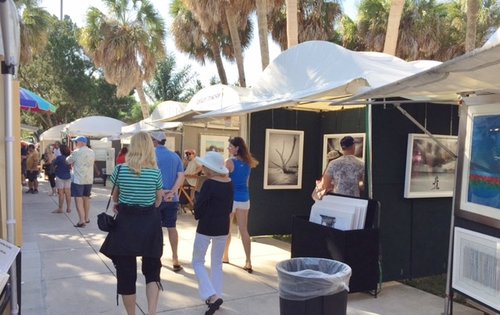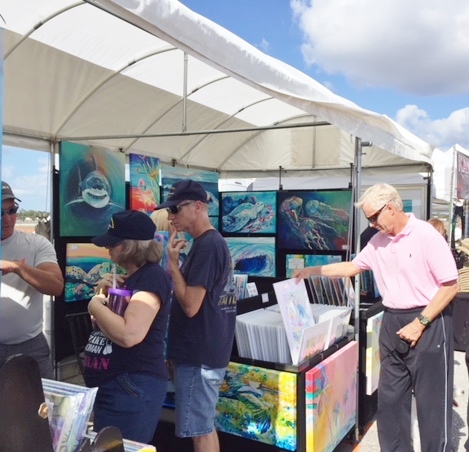by Carolyn Edlund
Do you have an art fair or festival coming up? Use these strategies to increase customer connection and sales.

Make a personal appearance and be accessible.
It’s amazing how many times exhibitors are simply not in their booths during festival hours. At times this may be unavoidable, but often artists have a level of discomfort and stress that finds them socializing elsewhere, or they subconsciously avoid dealing with the public.
It can be stressful to work a show, promoting your art or handmade work and trying to close sales – no doubt about that. But you cannot sell anything if you aren’t physically present to do so. If you’ve shied away from this before or feel anxiety about exhibiting, resolve to be present in your booth as much as possible to develop a comfort level.
Be proactive in engaging with customers.
You’re in your booth, prepared for the show – but are you speaking with customers, or hanging back, hoping that your work will sell itself? The truth is that your personality, your story and the connection you make with customers is a major part of each sale. Collectors want to know about you as the artist. People love to buy things, and they enjoy an exciting buying experience. This is where you can really shine.
Your story is memorable to those who are interested in what you make. They will in turn share that story when showing others what they have purchased from you. This is why it’s important to understand how to frame your story in different ways, presenting highlights that draw interest and get a reaction.
Customer skills are equally essential. Make eye contact, speak about your work – and listen to the customer. Why have they attended the fair or festival? What do they enjoy about your art, and which piece is their favorite? Are they interested in a particular piece in your booth, or would they consider custom work? The more you learn about your booth visitors, the greater your opportunity to serve them (and sell them).
Place the item in their hands.
It’s been said that when you hand an object to a customer “it is three quarters sold” and that is often true. This action is a powerful nonverbal way to help your customer begin to feel a sense of ownership of the item they are considering. Touch is a key element of the customer’s experience, so unless the item is large or very heavy, encourage them to feel the weight, texture, and quality of what you make. Make it convenient for customers to try on wearable art, by having a mirror handy so they can appreciate how your work looks, and how it makes them feel.

Include your customer’s companions in conversation.
Customers are often with friends or in groups when they attend a fair. When speaking with a potential buyer, remember that they are not alone. Be sure to include their companions in the conversation as well, through making eye contact and smiling. Have you noticed that when a customer makes a purchase, their friend often does as well? Don’t overlook these opportunities. The friend might become an additional customer for you. Or, they may be the one who has been holding the credit card all along!
Companions often have great influence even if they are not a buyer. They may admire the item and encourage a purchase, or they could head off a sale with a negative comment or a stated desire to look elsewhere. Make sure these important influencers are included in the conversation, shown respect, and not ignored.
Know your selling points.
Why should people buy your work? You should have a working knowledge of specific benefits to the customer, and be able to speak about them clearly. This doesn’t involve rattling off a list, but being able to engage in meaningful conversation with shoppers who are considering a purchase.
Customers often need assistance from the artist to alleviate concerns, and gain trust. Your professionalism shows up here. Helping people to make the right buying decision is actually performing a customer service. And consultative selling skills often involve making recommendations that will help your customer choose just the right item to purchase.
Get their contact information.
People make a purchase when they are ready. Do they want and need what you’re selling right now? Or are they a longer-term prospect?
Quite often, art shows are the initial contact point between artists and potential collectors. They see your work, and they like it. You share your story and they get to know you. But they aren’t quite ready to buy. Gathering names and contact information is essential at this point. This activity gives you a way to stay in touch and keep your work in front of prospects on an ongoing basis. When the time comes to make a buying decision, prospective customers will be familiar with your work and more likely to purchase from you.


Speak Your Mind